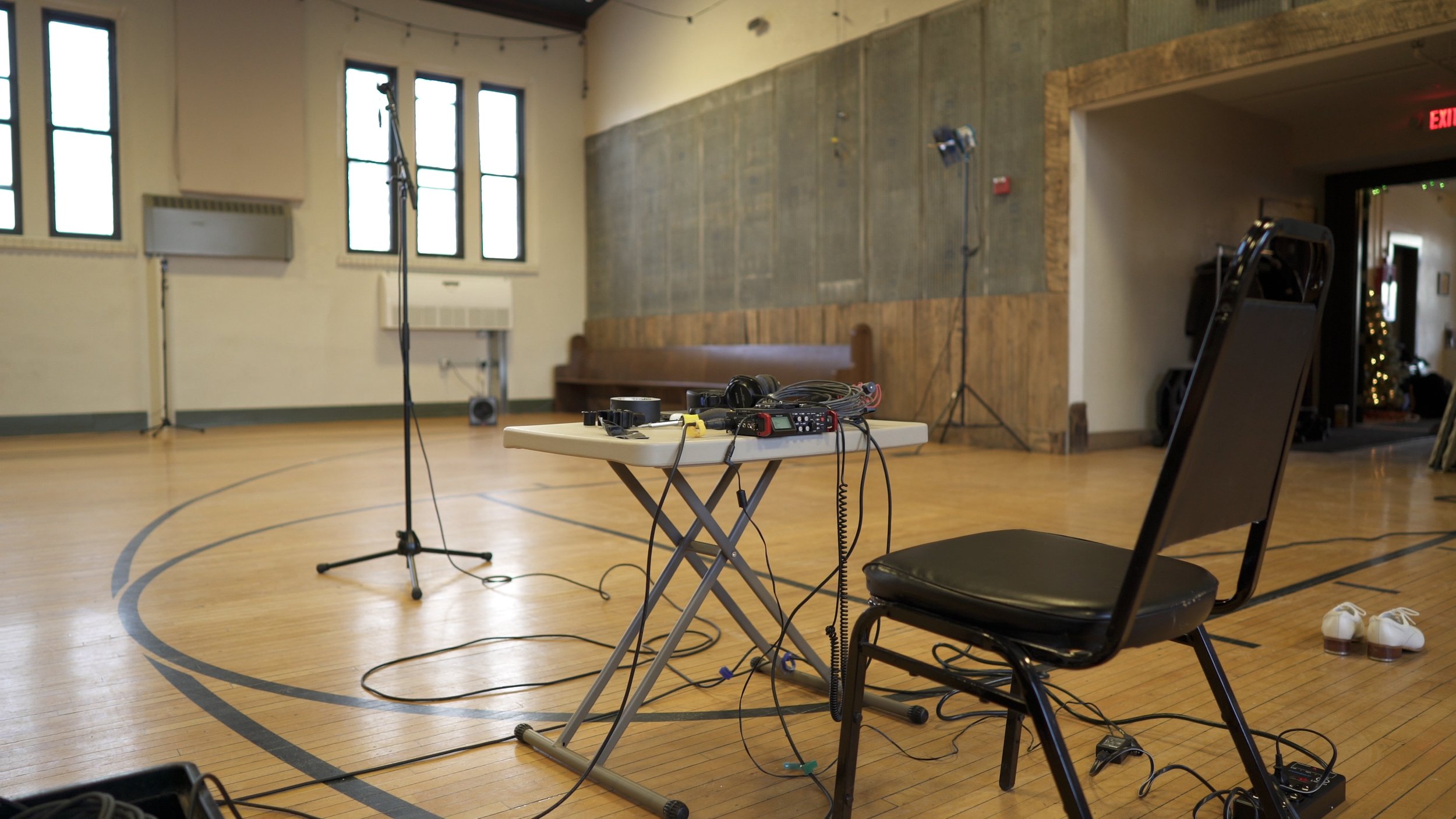Setting the Stage for Production
Pre-production for “Improvisations” involved a lot of meticulous planning. Knowing my goal to create a space for musicians and dancers to create new works in the moment, I had to be very intentional about how I set up the plan for the production. I approached this in three layers that I will outline below.
Layer One: Original Jazz-informed Composition
My long-time collaborator and composer Stephanie Henry was one of the first people I consulted with when I was tossing around the idea for “Improvisations” for a Minnesota State Arts Board grant opportunity. I knew I wanted the first layer to be a piece of music for dancers to improvise to – Stephanie and I discussed a melody that could serve as an inspiration to the dancers.
When we secured the funds for production, Stephanie and I met about how to approach the piece. Because improvisation is so related to the jazz tradition, we explored the idea of instruments used in jazz. I knew I wanted to play with an instrument that wasn’t as highly represented in jazz, and Stephanie chose the marimba.
Stephanie created a wonderful melody that was loopable, per my request. A looping melody was important for adding the next layer.
Layer Two: Live Improvised Dance Filming
My original vision for the piece always centered around including dancers from multiple disciplines. I was excited to work with dancers from distinct forms of dance to explore how their movement vocabularies responded to the musical melody. Ballet offers long lines, graceful shapes and height. Tap dance offers movements with a lower center of gravity and a keen focus on rhythm – it is a musical instrument and a dance discipline in one. Modern dance is grounded and very connected with the floor, but also offers a fluidity that juxtaposes with the straight spine alignment of ballet and tap.
I wanted to work with dancers who were comfortable with and excited by the notion of unchoreographed material.
Shari Setchell, Ballet
Shari Setchell has been teaching ballet for over twenty years. I’ve been lucky enough to be one of her students – her classes emphasize building strength and learning about anatomy for how to support making balletic shapes in a healthy way. She thrives on the art of improvisation in ballet, which is traditionally a choreographed art form.
Carson Bechtel, Modern Dance
Carson has been studying many disciplines of dance since his early youth, including tap, ballet and modern. I have had the pleasure of watching him grow up while taking classes from his mother, Daphne McCoy, through Northfield Dance Academy. He has always excelled in performance, but after watching a modern dance he choreographed himself in the summer of 2021, I knew he would be a great fit for this production.
Kaleena Miller, Tap Dance
Kaleena Miller and I have known each other since meeting as first year students at St. Olaf College in 2002. I first saw her perform that fall, when she improvised a percussion number with her on tap and a drummer on trap set. Though an accomplished dancer at choreography, improvisation is where she feels most creative, which aligns perfectly with the inspiration for this short film.
Layer Three: Musical Interpretation of Dance
Though we were already planning to have a recorded musical track for the piece, I was excited to offer a chance for musicians to improvise off of the simple melody as well as the dance footage.
To accomplish this, I will create a “picture lock” version of the final short. That means that I will take the initial marimba melody written by Stephanie and edit that together with the dance shots. The result will be a semi-final version of the short film, which should have a running time of about five minutes. The picture lock is called when I am finished with editing and no changes in run length or sequences will happen. The only change after that can be audio, the addition of titles and possibly some color correction on my end.
When the picture lock is complete, I will screen that version of the short to two musicians and ask them to improvise based on what they see AND hear. I’m excited because musicians experienced in jazz usually only get one art form to improvise to, and this multidisciplinary approach should be a fun experiment.
A Team I Can Trust
My first article in this series was about why this piece is so important to me – I struggle with performance anxiety for premeditated works and find improvisation to be freeing. The team I have selected to work on this piece as performers have either struggled with this issue in the past or can empathize with it, making the experience all the more meaningful.
I’m excited to see it develop!



